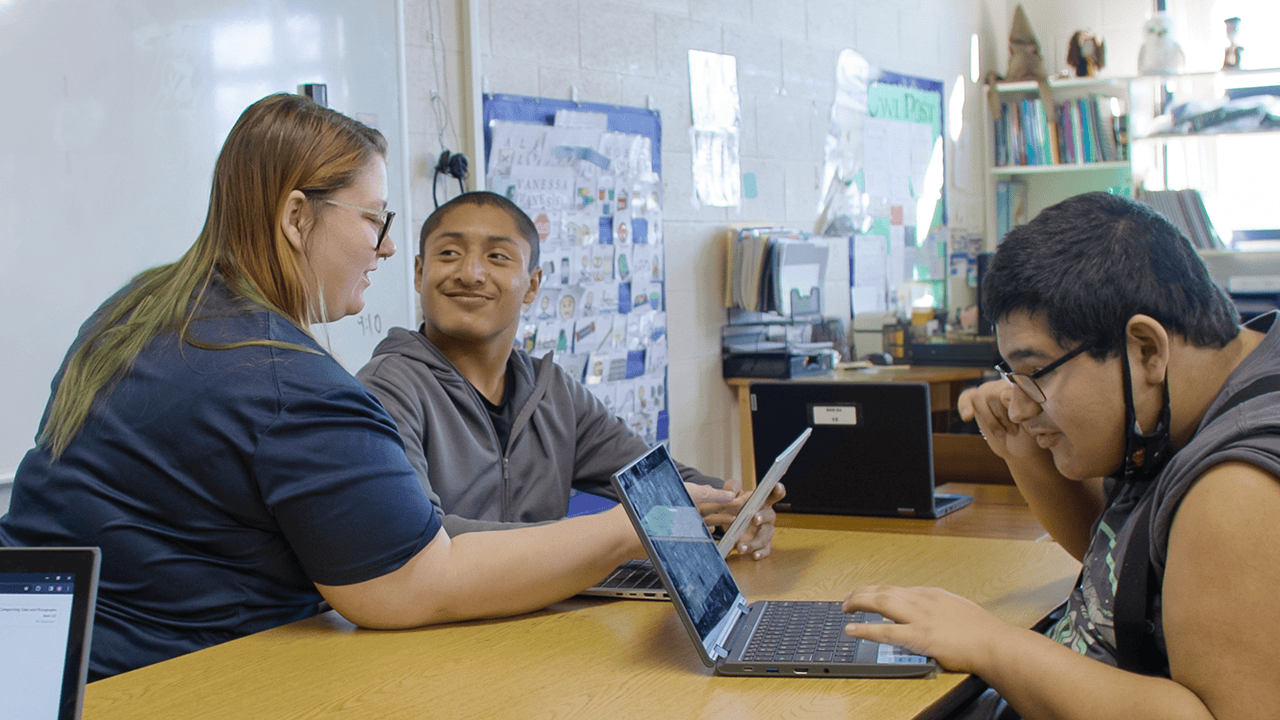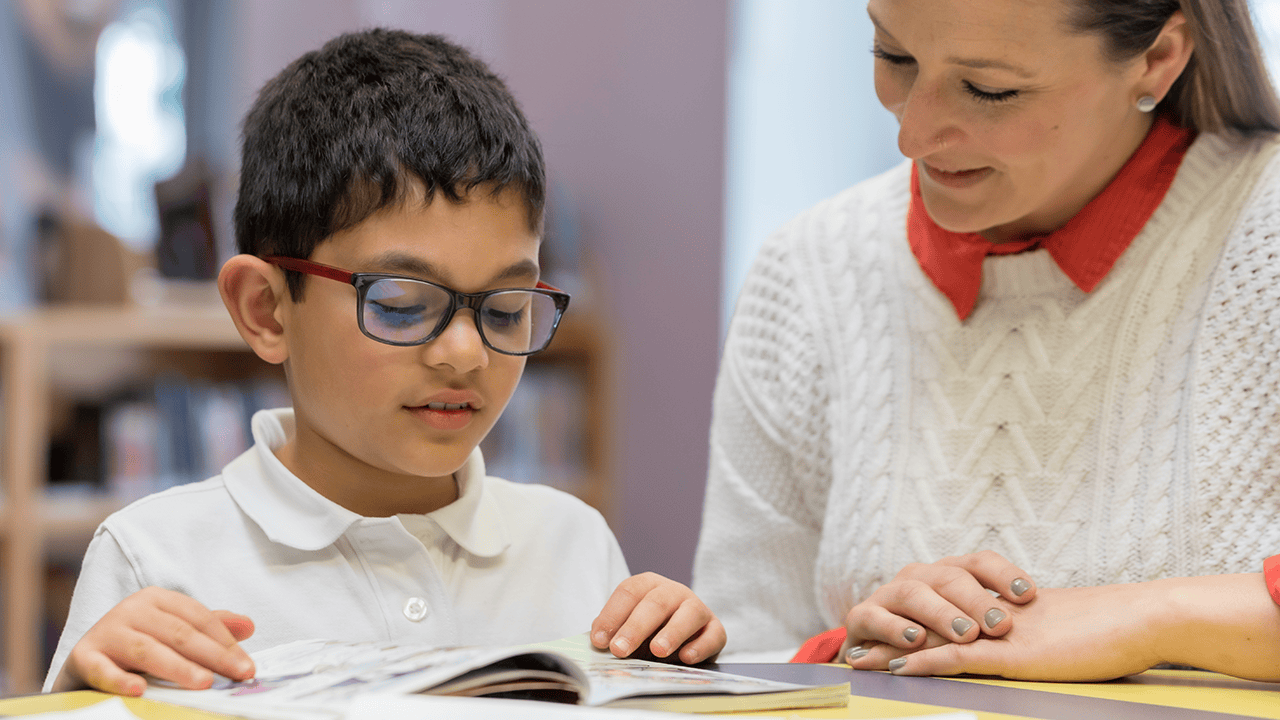Most people who have heard of applied behavior analysis (ABA) think of it as a treatment for individuals with autism spectrum disorder. However, the applications of ABA reach far beyond this singular scope. Applied behavior analysis is the science of behavior. It works to improve socially significant behaviors of individuals, including communication and social skills, adaptive behaviors, and, overall, acquisition of new learning.
Those trained to deliver ABA services closely examine the variables that occur immediately before and after behavior to help us understand why the behavior occurs. Many people are surprised to learn that the principles of behavior that applied behavior analysis uses to teach new skills are present in all our lives. Think about when you hit the off button on your alarm clock each morning to stop the buzzing sound. Negative reinforcement helped you to initially learn that skill and now continue it each day. Many of us also like coffee as part of our morning routine. Thanks to positive reinforcement, we go straight to the power button each time we’re ready to start brewing. You can find the principles of behavior in many other areas of life as well!
Classroom Application of ABA
Applied behavior analysis usage continues to grow in classrooms, particularly in special education settings. It’s been shown through research time and time again to be effective for classroom management, behavior reduction, and teaching new skills. As a district support specialist, I worked with many teachers who wanted to incorporate ABA practices into their classrooms but felt overwhelmed when determining where to start. I told them that if they were delivering high-quality instruction to students, they were likely already incorporating principles of behavior because it is just part of good teaching. Throughout the school day, teachers are modeling and reinforcing desired behavior and responses, correcting errors, teaching self-management, and more. All of these actions have their roots in behavioral principles.
When choosing instructional resources to use in their classroom, teachers want to incorporate strategies that research has shown to be effective for the students they serve. We know that the principles of behavior are part of high-quality special education instruction, so that’s why we’ve incorporated these evidence-based practices into our materials in Unique Learning System. Here are some examples of ABA principles you’ll find:
Systematic Instruction
Systematic instruction uses components of applied behavior analysis to help students acquire new skills and generalize them to various materials and settings. It has been shown to be an effective approach for teaching students with disabilities in many different areas including reading, writing, math, and functional skills. Systematic instruction involves teaching specific concepts and skills in a structured and sequenced way. This sequence of instruction typically starts with easier skills and gradually builds to harder, higher-level skills. Systematic instruction also breaks harder skills down into smaller parts so students can learn those skills effectively.
Unique Learning System helps teachers implement a systematic approach in the classroom because each unit is organized to effectively introduce skills and build upon concepts. The Suggested Unit Pacing is a starting spot for teachers to plan their instruction in a systematic way. Inside each unit, lesson plans are broken down by activity and are designed to systematically target specific, age-appropriate skills and learning goals. Lesson plans incorporate instructional strategies for teachers to introduce, model, and provide practice with lesson materials. Lessons with multiple activities build upon one another to help students master more skills.
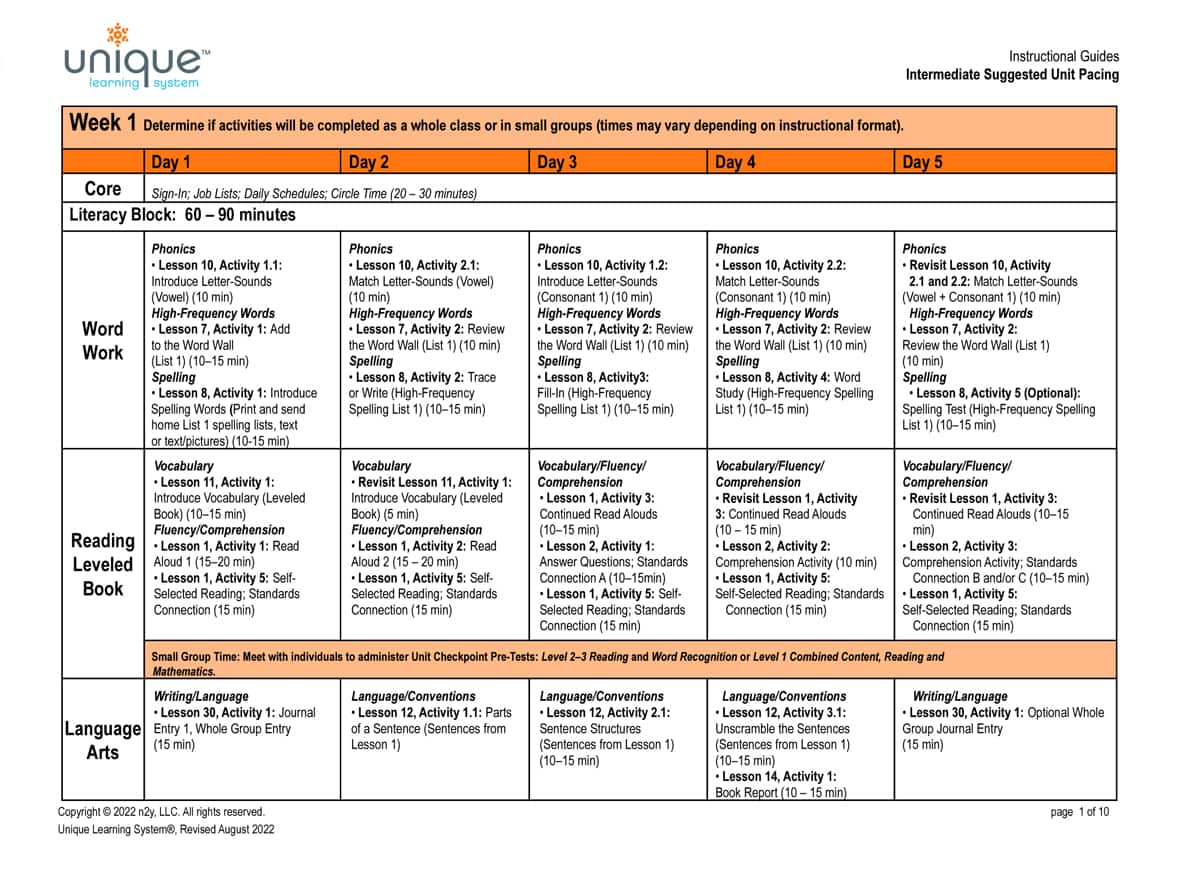
Modeling
Modeling is a key strategy used in behavior change programs. We constantly look to others to show us how something should be done. When teachers model for students, they are showing them how to do a specific skill and then reinforcing them for doing it. For example, if we want to model how to draw a circle, we might first take a pencil and paper, draw the circle, and then ask the student to do the same.
In every Unique Learning System lesson plan, you’ll find explicit guidance on how to model lesson activities and specific learning strategies. Lesson plans often provide suggested phrasing and questions to use with students! This can help teachers understand how and where to build in this important part of teaching.

Prompting
Similar to modeling, prompting is an important way in which we learn. Prompting is the assistance given to students to support them in learning a new skill or engaging in a desired behavior. Prompts increase the likelihood that a student will get the correct response, which in turn helps teachers know to deliver reinforcement for those targeted responses. Prompting can take many different forms, such as verbal, gestural, visual, or even physical. Ensuring that you are picking the right level and type of prompting for each student and that you also have a plan for fading prompts are keys to implementing this strategy.
We understand how important prompting can be to learning and provide suggestions in all Unique Learning System lesson plans for prompting targeted student responses. Prompting is also built into the interactivity of lessons so students can get immediate feedback on correct and incorrect responses. The Teacher Reference Materials section of Unique Learning System provides additional resources and information on prompting, including the Instructional Tips, Active Participation Guidelines, and Active Participation Scripts documents.
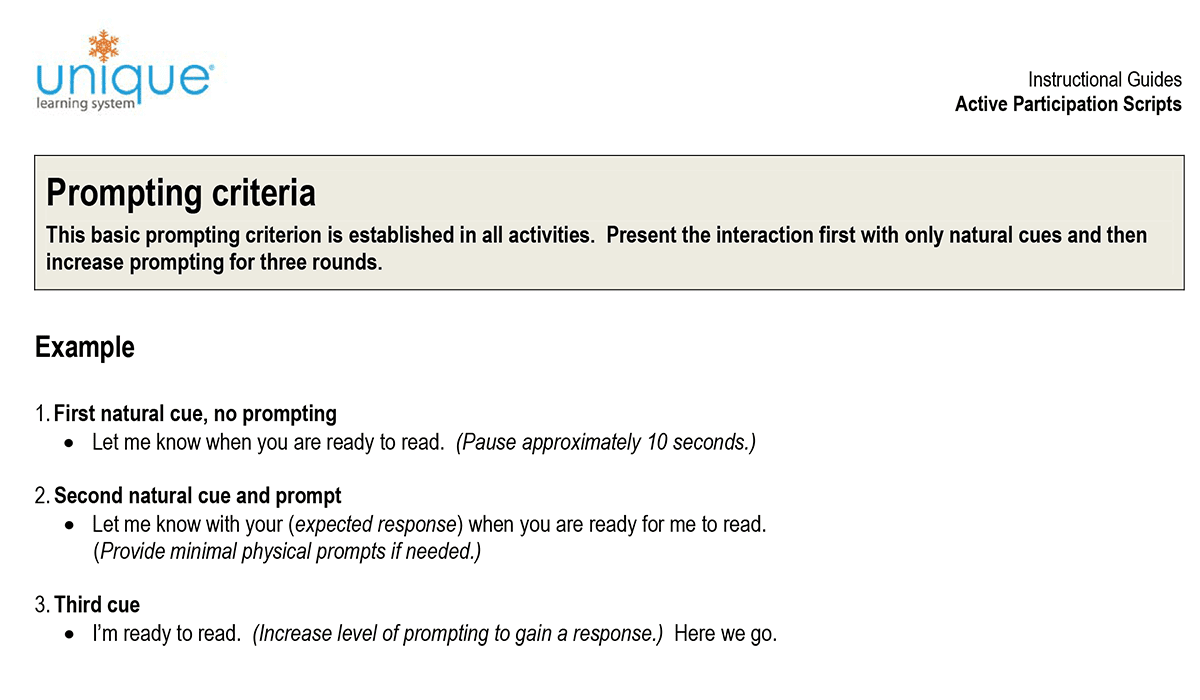
Reinforcement
Reinforcement is another foundational principle for how people learn. Reinforcement occurs when a specific response to a behavior increases the likelihood that the behavior will happen again in the future. You have probably experienced reinforcement many times in your day already, maybe without even knowing it! Reinforcement can be seen in many ways in the classroom. Verbal praise, tangible rewards, and even a simple high five can help shape desired behaviors. For special education teachers, being aware of how reinforcement works and where to build it into instruction helps their students achieve success.
Each Unique Learning System lesson plan helps teachers know exactly which desired responses they will want to target in their instruction. Reinforcing these desired responses helps students understand academic concepts and learn new skills. Interactivity within each lesson provides students with both auditory and visual feedback that can reinforce desired responses. By understanding the targeted responses, teachers can then reinforce students based on individual needs and preferences.
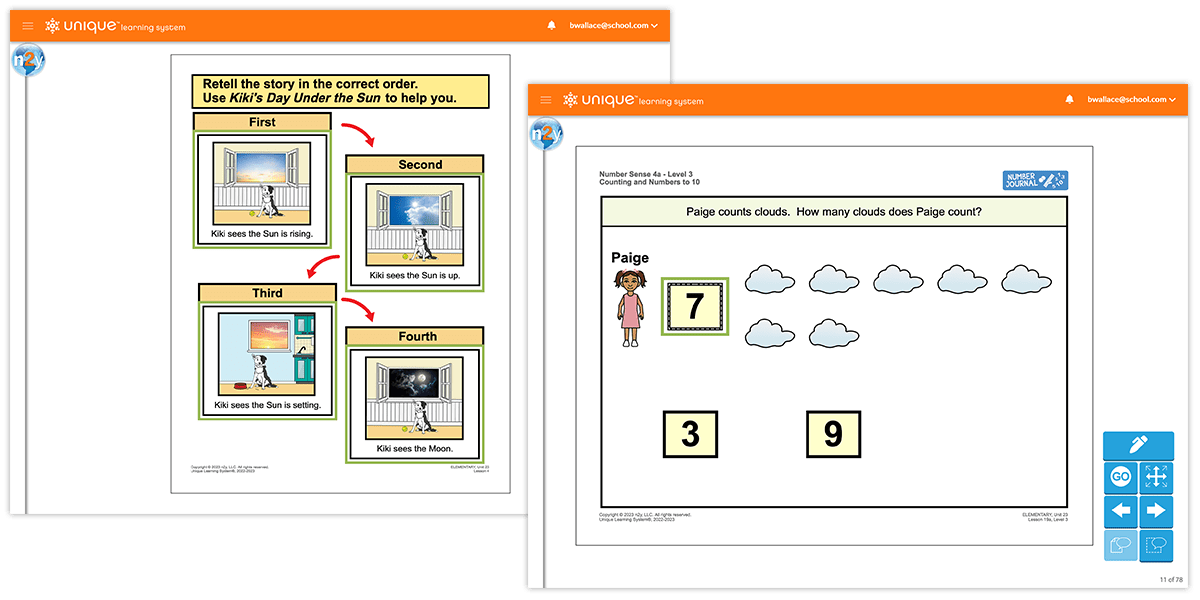
Summary
Incorporating evidence-based principles into classroom instruction is imperative for student success. Since special education classrooms are not one size fits all, teachers must pull from many evidence-based practices to help meet the unique needs of their students. Applied behavior analysis is a great example of one of these practices that not only will help improve the skills of students in your classroom but also shows up in everyday life. Unique Learning System is a comprehensive special education program that incorporates the principles of ABA and an extensive number of other evidence-based practices. Teachers using it can feel confident that their students’ needs are being met while delivering high-quality instruction.
